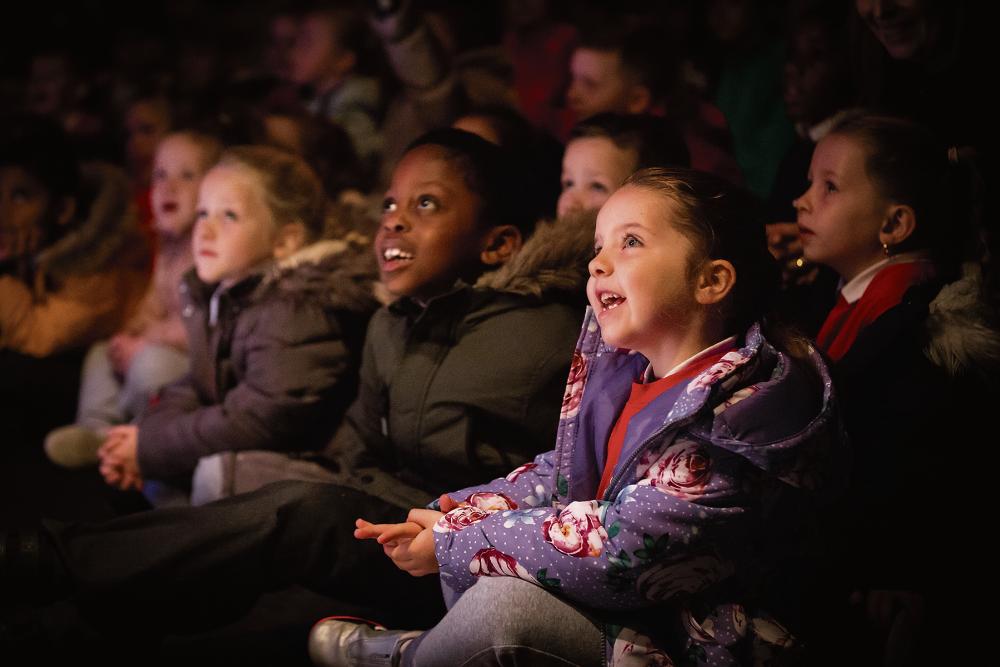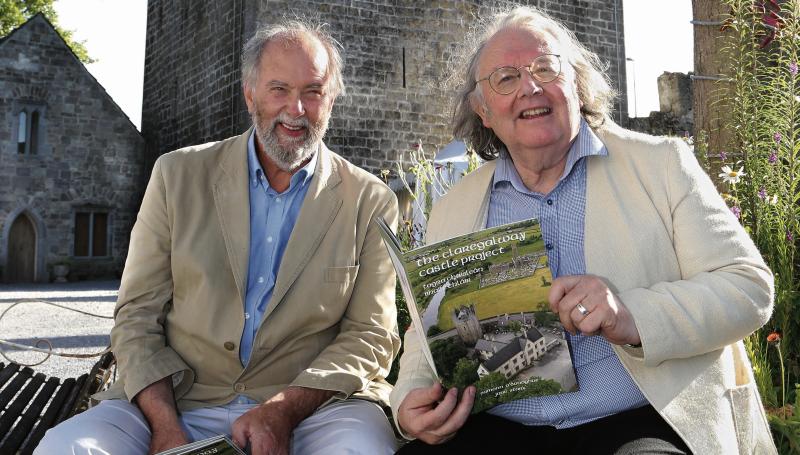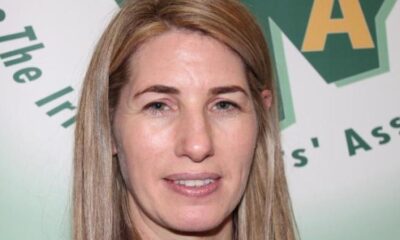Arts
Dance festival shines a light on conflict zones

Dancers, activists and academics from Palestine, Lebanon and Canada, as well as from Belfast and Enniskillen will attend the fourth Galway Dance Days Festival at the Black Box and other city venues from March 27-29, to explore the theme of Bodies in Conflict.
Galway Dancer in Residence, Ríonach Ní Néill chose the theme for this year’s festival as a result of Israel’s attack on Gaza last year. “It made me question what a dancer can do in the face of war. Seeing the life-changing and positive work dance artists do in conflict areas, I wanted to highlight this to the public,” she explains.
Ríonach, a professional dancer and choreographer, also wanted to explore why people would risk their safety to dance in a conflict zone, and that’s a question that will be raised during the festival.
The three-day Galway Dance Days event will be a mix of performances, installations, talks and workshops. At the core of the Festival will be an attempt to examine how living under conflict affects people’s bodies. And, says Ríonach, the festival will also highlight how dance and movement can help people to recover from trauma, rebuild communities, and create resilience. It even has a part to play in resolving conflicts, she adds.
Members of El Funoun Dance Troupe, who are based in Ramallah in Palestine, will make their debut visit to Ireland for Dance Days. The dancers work in refugee camps, villages and cities throughout Palestine, and also tour internationally. They were invited to Galway by Ríonach, who has “been aware of their work for years”.
For more, see this week’s Connacht Tribune.
CITY TRIBUNE
Marking Baboró’s birth as children’s festival turns 25

Baboró Children’s Arts Festival, which marks its 25th anniversary this year, changed the face of arts in Ireland by putting young people front and centre. “Until then, there wasn’t any theatre for children in Ireland, unless it was educational,” recalls Patricia Forde, a driving force in establishing Baboró.
“Theatre existed, but it wasn’t art. We brought in companies from Italy and Spain whose shows were just about art, not education. And they were beautiful.”
From the get-go, Patricia loved that companies created work specifically for certain age groups – toddlers for instance – that focused on their stage of development.
Baboró grew out of Galway Arts Festival and it reflected a changing audience dynamic.
In the early days of the Arts Festival, when Ollie Jennings programmed it, Patricia worked in the box office. The audience then was made up mostly of single people, many of them students and backpackers, she recalls. By the time she took over as Artistic Director in the early 1990s, that had changed.
“People were looking for more family shows.” She obliged, by setting up a family strand in the Festival, known as Baboró. Little John Nee, with his children’s shows, “was our anchor tenant”, she says of his annual appearances at the former Mercy Secondary School in Newtownsmyth. The first year when there wasn’t enough funding to dress the school yard in bunting, Patricia’s sister, Ailish, improvised by hanging colourful clothes on clotheslines across the yard. That year too, a fire engine was one of the main attractions and kids queued up to get their photos taken with it, she laughs.
This is a shortened preview version of this article. To read the rest of the story, see this week’s Galway City Tribune or Connacht Tribune. You can buy a digital edition HERE.
Connacht Tribune
Moving west to make her artistic mark

Bernie Dignam’s grandfather fought in World War I and was one of the unfortunate soldiers who saw action in Gallipoli, a horrific experience which damaged him for life. But he never forgot his fellow soldiers and for years afterwards, would mark Remembrance Sunday by wearing a poppy and marching in their memory.
In the 1920s, that didn’t win him many fans in the newly-independent Ireland, says his artist granddaughter Bernie who lives in Moyard, outside Clifden. Bernie never knew her granddad but admires him for staying true to himself, despite the consequences. It’s easy see why she would because she’s cut from the same cloth.
Her grandfather was from north inner-city Dublin and Bernie was reared in Finglas, the oldest of a family of eight children. Her journey to North Connemara brought her to Limerick and Monaghan before she finally arrived in the 1990s, to work in Letterfrack.
Moyard, between Clifden and Letterfrack, is where she built her home and it’s where she now runs her studio and art gallery, showcasing her work across a variety of genres – felting, weaving, batik and printmaking. It’s inspired by nature, mostly by the local landscape.
Bernie’s background is in design – after graduating from DIT, she did a research project in UL on the use of Irish softwood.
But there weren’t many jobs in design and product development when she left college and she didn’t have any connections in the industry. So she did a diploma that would allow her teach art and design, which is where she developed her passion for such processes as felting and batik.
She’d grown up around textiles, she explains, as her father, Christy, was an upholsterer. His day job was with CIÉ as a steady income was needed for his large family. But in his spare time, he upholstered furniture in a shed at the back of their house. She describes him as a master craftsman and an expert on fabrics. Her mother, Teresa, meanwhile, was “very practical. She fixed our bikes, made our clothes and knitted Aran jumpers for us”.
Read Judy Murphy’s in-depth interview with Bernie Dignam in this week’s Connacht Tribune, on sale in shops now – or you can download the digital edition from www.connachttribune.ie
Connacht Tribune
Bowing out after 31 years’ service

James C Harrold has played a key role in Galway’s artistic life for more than three decades. The retiring City Arts officer reflects on his years working in the county and city, and shares memories of artists, events and places, while also looking to the future.
Since 1990 I have been working with the artists, arts organisations, communities and neighbourhoods of Galway; for ten years as City and County Arts Officer, and subsequently specifically in the city. I had returned to Galway from Wexford Arts Centre where I had been Artistic Director, but before that I had spent a lot of time in the West. Every childhood summer was enjoyed in Barna, I went to college here, to UCG, and had worked with Galway Arts Festival, the Arts Centre and Macnas.
My romantic and adoring view of Galway originated in early-years visits to Kennys’ with my bibliophile father, or to Charles Lamb’s studio in Carraroe, or to my mother’s family in musical Belclare at the foot of Knockma.
‘Galway is a paradise,’ I stated firmly in a newspaper profile to mark my appointment.
I was one of the first of the new Local Authority Arts Officers, co-funded by the Arts Council with a brief to develop local arts.
Based in possibly Ireland’s oldest prefab at the back of the County Buildings in Prospect Hill, a handy base to explore from, create and curate projects, networks and funding opportunities, I was tasked to advise and assist the city and county in policy, programming and grant aid. My dear friend and college colleague Michael Diskin had returned to Galway on the same day, February 19th.
For the next 22 years, with Mike from 1994 ensconced in the Town Hall Theatre we met two or three times a week. Back in the ‘80s we had been inspired by Ollie Jennings and Páraic Breathnach, who had laid the foundations for so much of Galway’s creative reputation. We were following in their mighty footsteps and developing our own pathways too.
Early forays into the county involved bringing Little John Nee to the towns and villages every weekend that summer. His children’s shows, mainly open-air in the little market squares of east and north Galway opened conversations that are continuing still.
Read the full story in this week’s Connacht Tribune, on sale in shops now – or download the digital edition from www.connachttribune.ie












